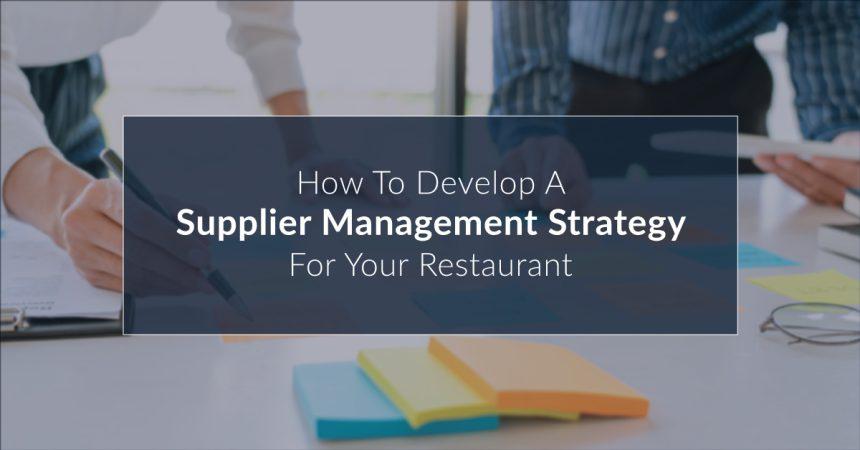Developing a supplier management strategy is essential for any restaurant that wants to operate efficiently and effectively. To serve good food on customers’ plates all the time you need to have a clear-cut chain for procuring items such as raw and semi-raw materials before turning them to sellable goods.
Some of the key ways to help you in doing so is as follows:-
- Identify your key suppliers:-The first step in developing a supplier management strategy is to identify your key suppliers which refer to those who provide you with the products and services needed to run your restaurant. Examples may include food and beverage suppliers, equipment suppliers, and maintenance and repair service providers.
- Evaluate supplier performance:-Once you have identified your pivotal suppliers you need to evaluate their performance by looking at factors such as quality, delivery times, pricing, and customer service. You can use supplier scorecards to track and evaluate supplier performance over time.
- Develop supplier relationships:-Building strong relationships with your suppliers is essential for a long running and effective supplier management. This includes regular communication, transparency, and collaboration. You should also work with suppliers to develop joint initiatives that can benefit both your business and theirs.
- Negotiate contracts:-When negotiating contracts with suppliers, make sure that the terms are fair and equitable. Things such as negotiating pricing, delivery times, and payment terms should be cleared in the very beginning. It’s important to have a clear understanding of your needs and requirements, and to communicate the same to your suppliers.
- Manage inventory levels:-Effective supplier management also involves managing your inventory levels. This includes forecasting demand, tracking inventory levels, and adjusting orders accordingly. You should also work with your suppliers to establish minimum and maximum order quantities to help manage inventory levels and avoid wastage of items.
- Monitor supplier risks:-Monitoring supplier risks is an important part of supplier management. This includes tracking changes in supplier performance, financial stability, and regulatory compliance. It’s important to have a contingency plan in place to address any potential risks or disruptions to your supply chain.
- Establish logistics:-Find reliable partners for the delivery of goods on time with safety and in a hygienic way especially in the case of perishables.
- Continuous improvement:-Finally, developing a supplier management strategy is an ongoing process. You should regularly review and evaluate your supplier relationships and performance, and look for opportunities to improve your processes and operations.
- Inculcate the use of technology:-From keeping a track of the quantity of things being ordered, their payments, storage and keeping an eye on the stock levels, technology can do it all and make operations faster and smoother for you thus, helping in keeping the flow of supply chain untangled.
Running a food business is not a child’s play and is destined to fail without proper planning and execution. However, putting the aforesaid steps in practice can make work flow seamless and help in expanding the business.



Leave a Reply